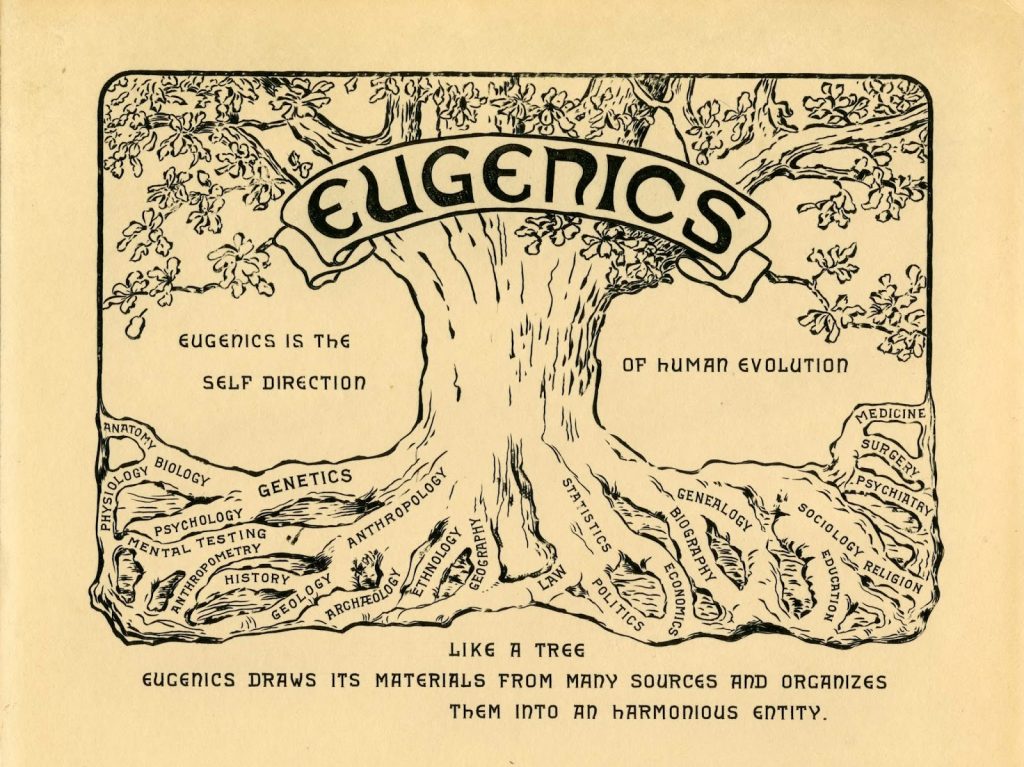
“It is common to think of our time as standing at the apex of civilization, from which the deficiencies of preceding ages may patronizingly be viewed in the light of what is assumed to be “progress”. The reality is that in the long perspective of history the present century will not hold an admirable position, unless the second half is to redeem its first… If we can not eliminate the causes and prevent the repetition of these barbaric events, it is not an irresponsible prophecy to say that this twentieth century may yet succeed in bringing about the doom of civilization.”
-US Supreme Court Justice Robert H. Jackson in his opening statements as a prosecutor at the Nuremberg trials (“Better for all the World” , pg. 305)
The word eugenics is one that has almost disappeared from our modern vernacular. You might be hard pressed today to find a group of people who know what it means and who understand the extent of its embarrassing and scary history. Yet, about 100 years ago the word was a household term and was tossed around with the ease that we might talk about “sustainable development” or “genetic engineering”. Literally the word means “good genes” (eu= good, genic= genes) and starting in the mid-1800’s the word was used to describe a philosophy that advocated for improving the human population through breeding in order to increase the occurrence of desirable characteristics.
The idea of eugenics, as we know it today, began to form around the time that Darwin’s theory of evolution was beginning to become widely accepted by the scientific community. The study of genetics and heredity was flourishing and scientists could see no reason why if you could engineer a plant or breed a horse to have certain characteristics, then why you shouldn’t do the same with humans. Scientists of the day observed that things like eye and hair color, facial features, and even health conditions were all things that could be passed on through heredity. Through their observations they concluded that other less desirable traits– things like poverty, criminal behavior, laziness, and feeblemindedness (a person with a low IQ)– were also hereditary and could be “bred” out of a society.
Around the turn of the century social society reformers latched onto the idea of eugenics as way to improve social conditions and reduce crime and poverty. Most Americans were supportive of the practice of eugenics and viewed it as a way to increase the nation’s strength and superiority in the world. President Theodore Roosevelt was a strong supporter of eugenics. He said,
“ Some day we will realize that the prime duty, the inescapable duty, of the good citizen of the right type is to leave his or her blood behind him in the world; and that we have no business to permit the perpetuation of citizens of the wrong type.” (“Better for all the World” , pg. 6)
By early 1900’s the United States had even established the Federal Eugenics Records. The purpose of this office was to collect and record hereditary data for all citizens of the United States to be used to identify and control those citizens of the “wrong type” from reproducing themselves and thereby taking away valuable resources from the “right type” of citizens– those who were economically and socially productive.
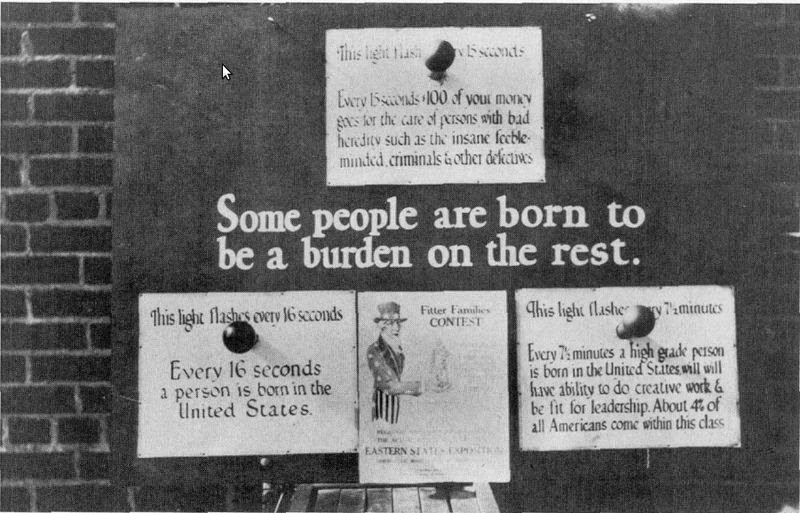 |
| .US eugenics advocacy poster from the Philadelphia Sesqui-Centennial Exhibition, 1926 |
The other main purpose of the Eugenics Records Office was to help states and counties identify and control their populations of “undesirable” citizens. One of the main ways that this was done was by the forced imprisonment and sterilization of men and women who were deemed “unfit” to be parents or who possessed characteristics, such as a low IQ, mental illness, laziness, or fecundity (high fertility), that were viewed as socially undesirable. Indiana implemented the first sterilization law in history in 1907. California’s law passed in 1909 and sterilized 2,500 people in 10 years. Fifteen other states had similar laws before 1927. In 1926 the US Supreme Court even ruled that it was constitutional to forcibly sterilize such citizens, without their or their family’s consent, because it was in the best interest of the nation to make sure they didn’t reproduce. By the 1930’s Canada, Denmark, Finland, Sweden, Norway, and Japan had passed laws similar to the US’s eugenic sterilization laws (“Better for all the World” , pg. 228)
Eugenics was widely accepted and viewed as the most innovative scientific approach to improving social conditions. Havelock Ellis, who was a strong supporter of eugenics and a close “friend” of Margaret Sanger, the founder of Planned Parenthood, wrote,
“The superficially sympathetic man flings a coin to the beggar. The more deeply sympathetic man builds an almshouse for him so that he need no longer beg; but perhaps the most radically sympathetic of all is the man who arranges that the beggar shall not be born.” (“Better for all the World” , pg. 143)
The idea of eugenics and forced sterilization as a method of social reform and progress was so common and acceptable that in the United States it was common to see educational displays at State and County fairs promoting the principles of eugenics and heredity. Many counties also hosted “Fitter Family” competitions showcasing families who embodied the “right sort” of eugenic principles and characteristics.
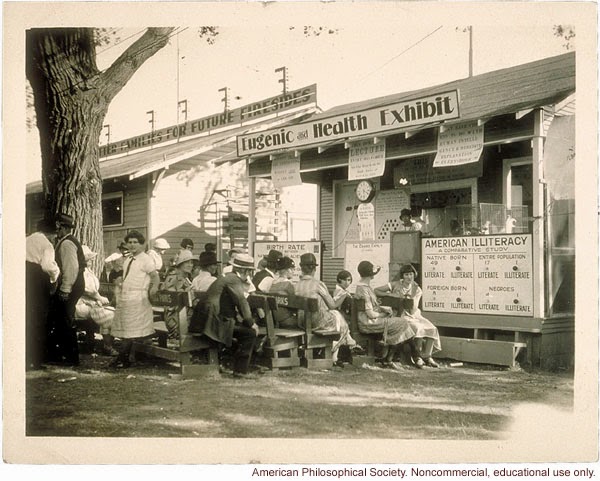 |
||
| Eugenics display at the Kansas State Fair in 1920. |
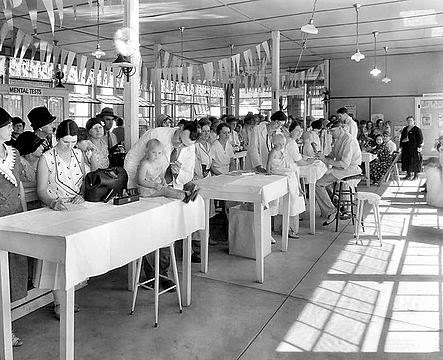 |
||
| “Better Baby” Contest at the Indiana State Fair in 1931 |
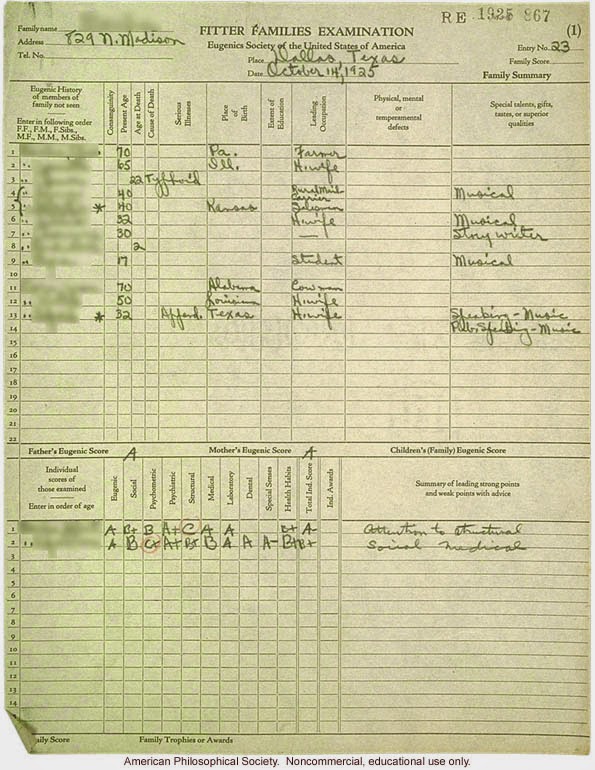 |
| “Best Couple” from the Fitter Family Contest at the Texas Sate Fair in 1925 (Click to see larger) |
Even Latter-day Saints were not immune from buying into the idea of eugenics. For example in 1928 an article called “ Intellectual Responsibilities of Mothers” was published in the Relief Society Magazine. In it the author, Heloise Day Merkley, wrote about the responsibility women had to develop their intellect and their minds. This is the advice she gave to young women looking for husbands:
“The eugenist lays great stress upon the heredity of the child. He tells the girl that the surest way in which she can help her children intellectually is by choosing for them a father with the proper intellectual equipment, and from an intellectual family…it is important to choose the best possible mate if you would fulfill your intellectual responsibility to your children as their mother. But how many girls know anything about eugenics and heredity? Or, if they know, how many think seriously of such things when they decide to marry? Moonlight often plays a more important part in the choice than does eugenics.” (“Motherhood: A Partnership with God.” Compiled by Harold Lundstrom. Bookcraft, Inc. Salt Lake City, Utah. 1956. Pg. 75)
Yet despite the wide support and enthusiasm for eugenics in the United States and around the world the word and its history are rarely discussed. This is because the “scientific” study and practice of eugenics, when carried to its natural end, resulted in one of the most horrific events of the 20th century.
In the early 1930’s when Adolf Hitler and the Nazi party gained power in Germany one of the first things they did was to enact the “Law for the Prevention of Genetically Diseased Offspring” and its language closely followed that of the US eugenic laws. Within two years 150,000 Germans had been sterilized and, because the real horror of what Germany was doing had not yet been fully realized, the world highly applauded their progress they were making in eugenic practices. In fact, Harry Laughlin (the director of the US Eugenics Records office) defended the German law from critics by saying,
“ To one acquainted with English and American law, it is difficult to see how the new German sterilization law could, as some suggested, be deflected from its purely eugenical purpose, and be made an “instrument of tyranny” for the sterilization of non-Nordic races. One may condemn the Nazi policy generally, but specifically it remains for Germany in 1933 to lead the great nations of the world in the recognition of the biological foundations of national character.” (“Better for all the World” , pg. 280)
It is hard for us now, knowing what we do about the atrocities committed by the Nazis, but at the time very few in the world could see any danger in what Germany and the Nazi party were setting out to do. They were seen as being the “cutting edge” leaders in the new scientific method of eugenics and social reform. The world was excited and interested in the work that was going on in Germany and applauded its success.
When, almost 10 years later, Germany was invaded and the world got its first glimpse of death camps like Auschwitz and Dachau it was horrified. No one had thought that such wide spread atrocities could have been possible or that the modern and scientific practice of eugenics could have come to such an end result. The United States was especially horrified and embarrassed when at the Nuremberg trials the Nazi defense lawyers cited American precedence as justification for the Nazi policies.
Eugenics
Today
As a global community we spend millions of dollars every year ensuring that the “wrong” type of children are not born; children who would be a burden on their mothers, their fathers, their communities, and nations. Laws that support things like abortion, greater access to contraception, and reproductive health care are often aimed at making sure that women, especially women who won’t produce the “right” type of members of society, aren’t burdened with additional children. Decreasing birth rates is seen as one of the most progressive ways to decrease poverty, end hunger, empower women, increase access to education, and just about every other UN Development goal.
almost look back at the early eugenicists and laugh at their idea that things like
laziness or poverty were things that could be inherited solely through one’s
genes. We know that such things have
more complex cause than mere genetic makeup. The truth is that just like crime
at the turn of the century wasn’t really caused
by genetics, as eugenicists claimed, inequality, poverty and under-development
today are not caused by unwanted, or
too many, babies.
The reasons behind
things like poverty and social inequality are much more complex and involve
multiple issues– things like unequal distribution of resources, gender
inequality, prejudice, war, greed, and a thousand other issues. Pregnancies,
children, and the sanctity of life are
not the source of our societal problems, even though we often treat them like they are.
that children should be born into poverty or slavery, and I’m not saying that
women should not have more knowledge about their bodies and more choices about
their sexuality. What I am saying is that I think we are missing the mark when
we think of women’s fertility as a problem to be solved rather than a blessing. Womankind will never be truly empowered when her society sees her power to create life as an inconvenience and something to be controlled.
health and their reproductive choices, many of the world’s women are helpless
victims in those areas. Yet I think we need a different– more
life-affirming– approach to it. We need to approach that doesn’t focus on
getting rid of children and in the process harden and close our hearts off
to those yet unborn. We need an approach to women’s issues that addresses the
heart of what is wrong–that female life is not as valued as male life, that women often have no voice, that women are seen as sexual objects, that their motherhood is undervalued, that men won’t commit to women through marriage, and that women bear an unequal amount of the world’s
poverty, hunger and violence.
The world’s solution for most of these problems
is to give women more access to “reproductive choices” that will free them from
the oppression of their female bodies and the burden of children. While such mindsets towards procreation and life may seem
harmless I think that it hurts women much more than it helps them. Women don’t need to be rescued or freed from their female bodies or from their fertility. They need to live in a world that appreciates every aspect of who they are, a world that values their ability to create new life, and their role as creators of the future. Women need a world where every child they create, or even have the potential to create, will be welcomed and cared for, not prevented or destroyed.
belief that some life is more valuable than others; the idea that human life was a commodity and it was rational, progressive and scientific to decide who was worthy of life and who wasn’t. I think that in many ways our world still buys into this mindset and that if we are not careful we run the risk of suffering the same tragic consequences our grandparents witnessed, but perhaps on an even greater scale. As Justice Robert H. Jackson, who was a prosecutor at the Nuremberg trials, said in his opening statement,
“..If we can not eliminate the causes and prevent the repetition of these barbaric events, it is not an irresponsible prophecy to say that this twentieth century may yet succeed in bringing about the doom of civilization.”



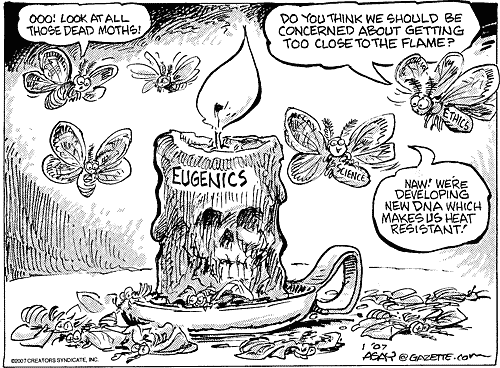






Wow. Brilliant article.
Thank you for writing this series.
Great article! Enlightening and articulate. Love it!
Fascinating! Thanks for sharing so much research in an organized way. I had no idea!
I concur, fascinating post. I am currently enrolled in a biology course and we are studying genetics, so I find this article very timely. Would you mind perhaps posting some sort of bibliography where we might link to more resources on this topic? Thank you!
Bethany, it is a super interesting topic. I really enjoyed the book "Better for all the World" by Harry Bruinius and that is where a lot of my quotes come from. Also you might like "The War Against th Weak" by Edwin Black. Here is a snippet of an article he wrote:
http://historynewsnetwork.org/article/1796
Also this is a really interesting website with a collection of Pro-eugenics (sometimes called positive eugenics) links. It is interesting to read from modern day people who still advocate for the idea.
http://www.eugenics.net/
Also, and even though it doesn't have to do completely with eugenics Margaret Sanger's Autobiography is really interesting and gives you a glimpse into her mindset and the mindset of the time period. When I read it I paired it with a biography of her, which was helpful to get multiple view points.
This is also an interesting article about eugenics and LDS.
http://juvenileinstructor.org/no-race-suicide-in-utah-eugenics-race-and-a-1907-postcard/
Very interesting parallels drawn here. Thanks for writing.
I never knew the Nazis got their ideas from us. How embarrassing and appalling. Wow. Thanks for sharing the history. Morbidly fascinating. And yeah, the societal problems can't merely be cured by a eugenic quick-fix. And even if it could, we have so much to learn from "problem" children and if they didn't exist, we'd miss out on so many opportunities to serve and develop Christlike love and compassion.